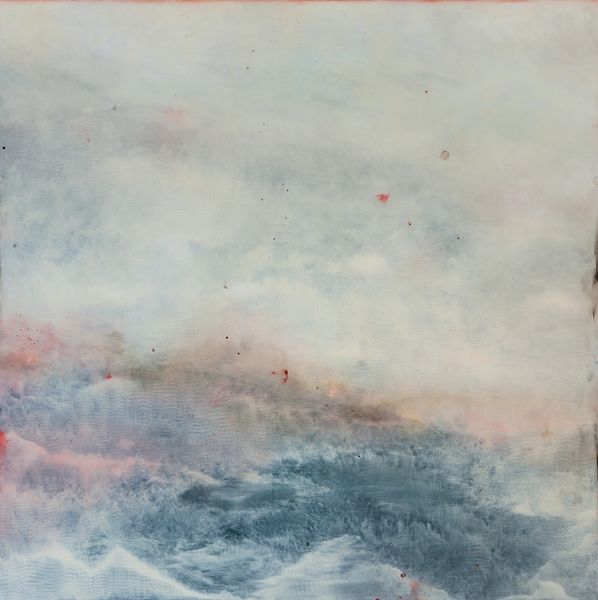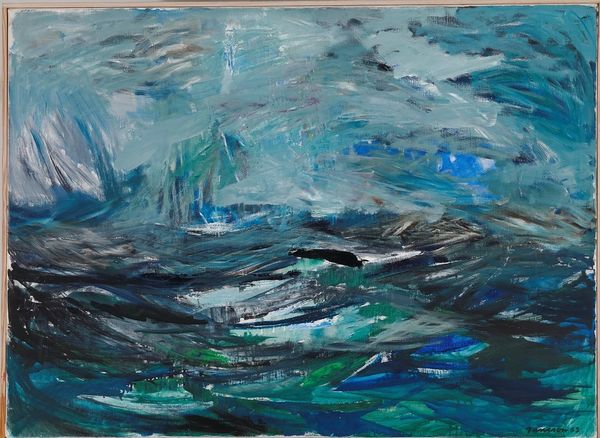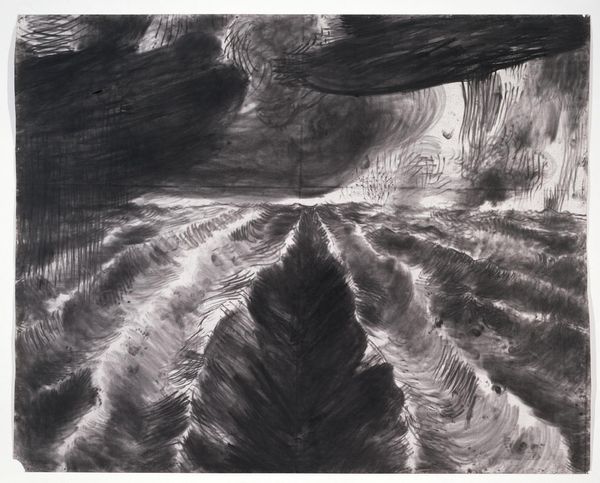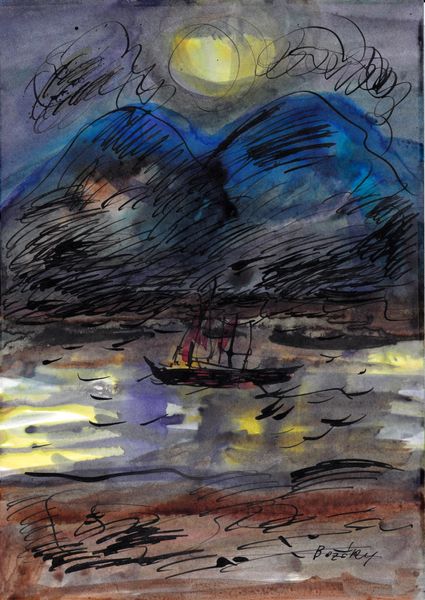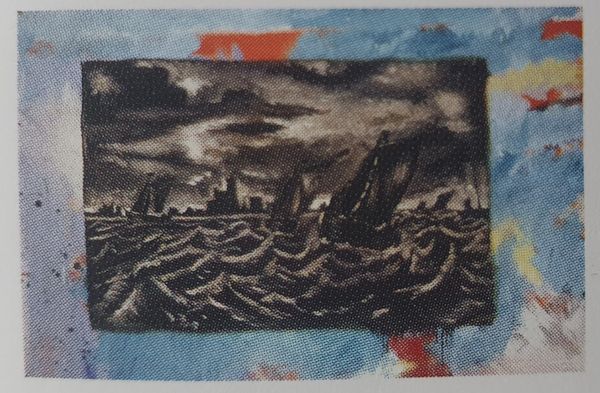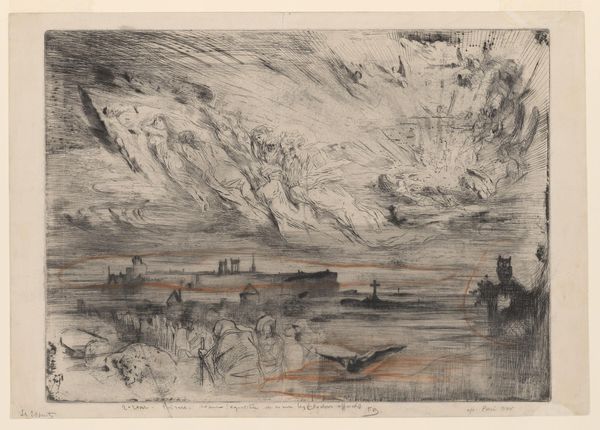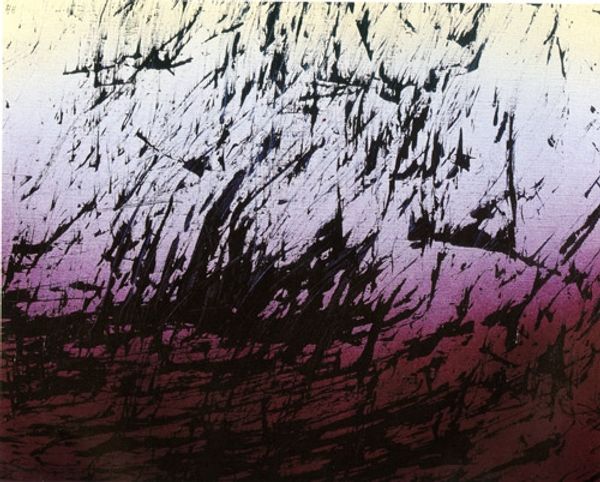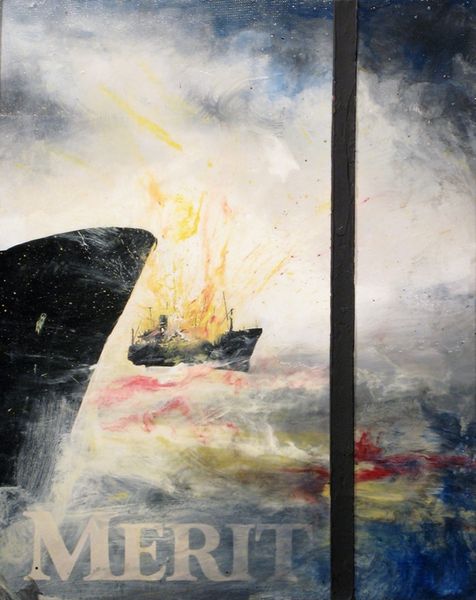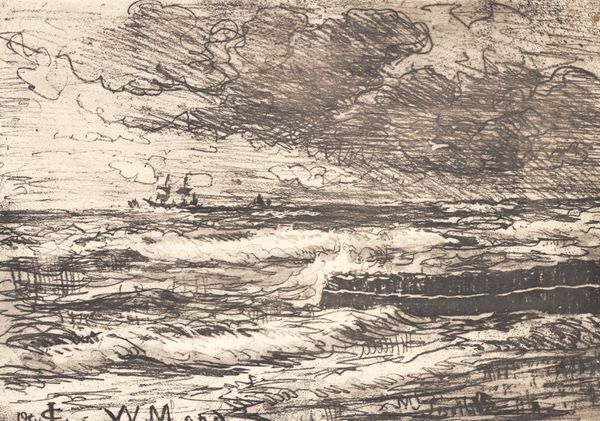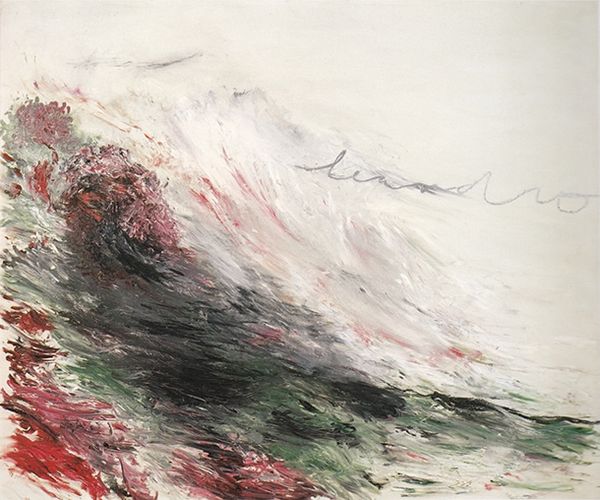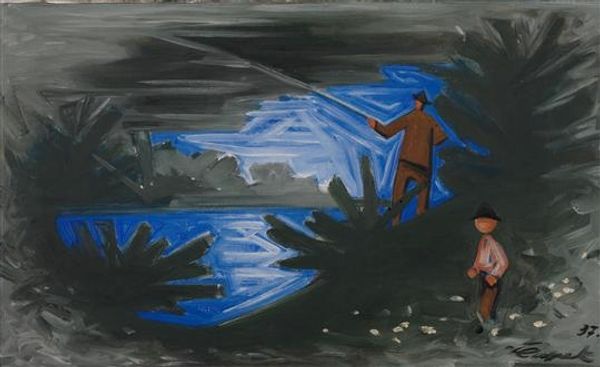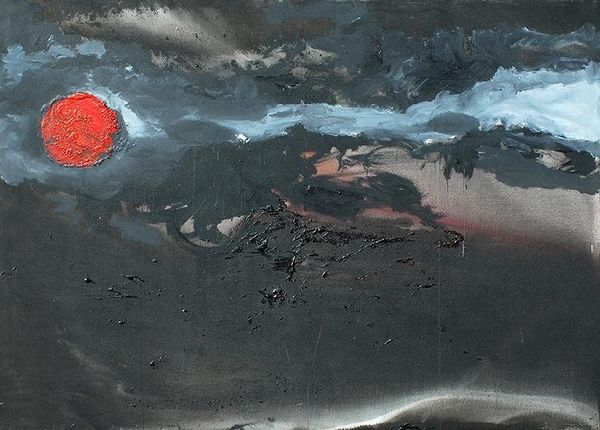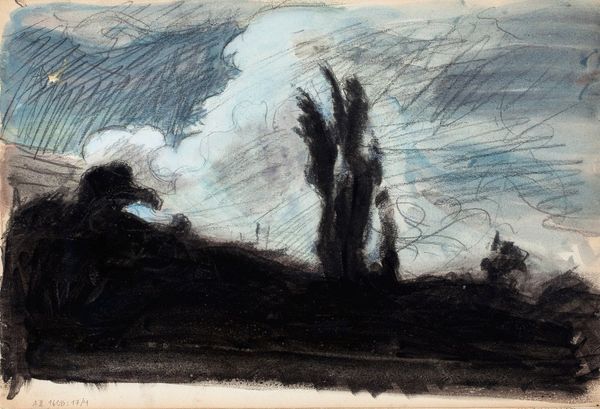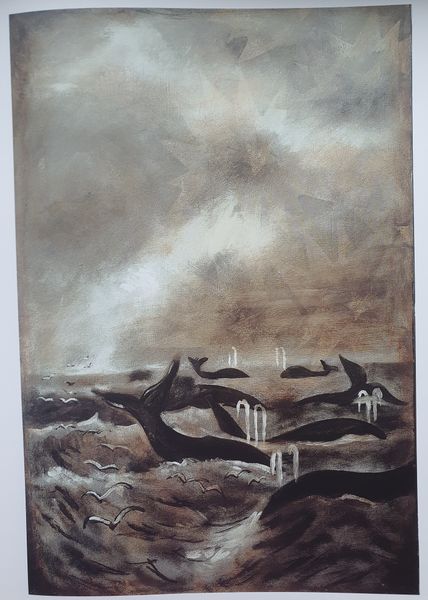
painting, oil-paint, impasto
#
narrative-art
#
painting
#
oil-paint
#
landscape
#
figuration
#
oil painting
#
impasto
#
cityscape
#
painting art
Dimensions: 100 x 150 cm
Copyright: Oleg Holosiy,Fair Use
Curator: Oleg Holosiy painted "Storm" in 1991 using oil paint, employing an impasto technique that gives the surface a textured, almost sculptural quality. Editor: My first impression is chaos – a powerful sense of disarray communicated through these aggressive, thick strokes of paint. It feels almost apocalyptic, doesn't it? Curator: Absolutely. Observe how the central, dark rectangle frames the tempestuous seascape, while the edges explode in contrast, offering an uncanny framing device. Editor: I'm immediately drawn to that dramatic juxtaposition. The darkness inside that outlined portion speaks to an environmental anxiety or maybe a sense of human fragility when faced with uncontrollable forces of nature, especially within a shifting socio-political context. This could be after the fall of the Soviet Union in Ukraine when societal values where reconsidered and chaos prevailed. Curator: I agree to a degree. Look at the execution, though. The oil paint has been worked into dynamic forms, from the churning waves to the oppressive clouds above. Holosiy really focuses on texture and rhythm to develop a visually complex and evocative image. Semiotically speaking, it speaks to the sublimity of landscape, and the structural integrity that can be offered by way of material engagement. Editor: Yes, I see what you're saying, yet these aren't just abstract forms. They tell a story of displacement, maybe even human migration via boats depicted. In many ways, the monochrome within this frame serves as an indictment of power structures that forced such crossings and upheavals. Also I think, it brings to mind contemporary discussions of the refugee crisis. Curator: The formal properties suggest, at the very least, that Holosiy saw some inherent expressive potential in oil paint itself, rather than focusing on any type of representation. The textural layering is where its semantic energy resides. Editor: For me, “Storm” communicates our uneasy relationship to natural, social, and historical phenomena, serving as a visceral reminder of ongoing conflicts and human struggle. Curator: I’m left thinking about art’s capacity to push the boundaries of what painting itself can signify on canvas. Editor: Indeed, this piece seems to be calling for a re-evaluation of cultural inheritance through periods of upheaval.
Comments
No comments
Be the first to comment and join the conversation on the ultimate creative platform.
